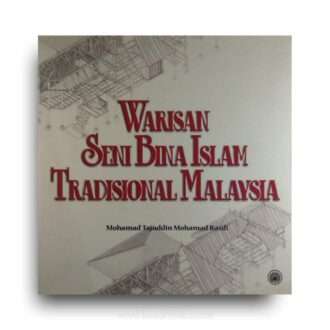China in Malaysia: State-Business Relations and the New Order of Investment Flows examines state-state relations and new forms of state-business relations that have emerged with an increase in China’s foreign direct investments in Malaysia. Focusing on investments in the industrial sector and through in-depth case studies, this book adopts a novel framework to analyse these different types of state-business relations. These new forms of state-business relations are created from the different modes of negotiations between different key actors in each of the cases.
Diverse outcomes were found, reflecting the disparate forms of power relationships and state cohesiveness with unique institutional architectures formed in each case. The book identifies a major shift in structural power in these new forms of state-business relations as China’s large multinational state-owned enterprises increasingly invest in Malaysia. A well-constructed institutional architecture is needed, not just in Malaysia but for other Southeast Asian countries, if foreign investments are to be harnessed to promote effective industrial development.
After President Xi Jinping announced his flagship Belt and Road Initiative (BRI) in 2013, a significant increase in investments flowed from China into Southeast Asia. China’s foreign direct investments flows into Malaysia were particularly noteworthy given the close ties that were subsequently forged between Xi and the then prime minister, Najib Razak. China’s investments in Malaysia’s infrastructure projects as well as in numerous other sectors grew appreciably from 2015. However, as in other countries, media attention and academic research in Malaysia have focussed on the mega infrastructure projects, a number of them controversial in nature, with much discussion about potential debt-traps and the limited transparency surrounding the award of these contracts.
Meanwhile, very little attention has been paid to investments in the industrial sector, even after a significant inflow of such funds from China into Malaysia, as well as other Southeast Asian countries. This served as the reason for the authors decided to assess what was occurring in this sector after they started discussing their respective work on BRI-based projects. Many intriguing points emerged during our discussions, prompting them to delve further into this lacuna in the research on the BRI. An initial typology of the different projects in the industrial sector convinced them of the need for a new framework. Although there are three economists among them, it was unanimously agreed that a purely economic framework was not suitable 4% it cannot explain the varied nature of these investments, the complexity of the transactions and the different outcomes in each project. Indeed, a careful assessment was required of the stakeholders involved in these projects. Hours of intense discussions eventually paved the way for a new approach towards the framing of their analysis for this monograph, leading to a unique perspective as well as fresh insights about the nature of China’s investments in the industrial sector.
The sheer heterogeneity of investors and outcomes in the different projects indicated to the authors the need to employ a case study approach to examine the diverse features of these investments. The selection of the cases was based on the classification of the projects, to ensure each category was covered in their study. Since the BRI projects are rather new, with most of them less than five years old at the time of our research, the authors had to use a combination of methods to extract the data for our analysis, including primary (interviews) and secondary sources. This was not the easiest of tasks as firm-level data from the Department of Statistics (DOS), Malaysia, is not available due to the Statistics Act, which keeps confidential the information obtained from individual respondents. This information cannot be disclosed to any third party.
There is also a three to two-year time-lag between DOS’s surveys and published data. This meant that aggregated data would probably not capture some of the relatively new investments. The directors and senior managers of these companies were not always keen to be interviewed because of the many controversies surrounding China’s foreign investments. To frame China in Malaysia: State-Business Relations and the New Order of Investment Flows, the authors have, however, attempted, to the best of their abilities, to capture the perspectives of investors from Malaysia and China when assessing these cases, creating a balance in the views of the host and investing countries.
The projects were assessed based on their stated objectives, as well as their long-term developmental implications, The latter was necessary as foreign direct investments, including inflows from China, are courted for their potential contribution to a host country’s economic growth and, particularly in the case of Malaysia, the development of domestic enterprises, primarily small and medium-scale enterprises through the creation of supply chains. This is particularly important when investment projects are costly and will be in the host economy over a protracted period. Malaysia’s dilemma in moving towards a higher stage of industrialisation is well covered in academic and public policy debates. As such, this assessment of the long-term objectives of China’s ventures in Malaysia provides invaluable lessons for managing these investments, not just for this country but for other emerging economies.











Reviews
There are no reviews yet